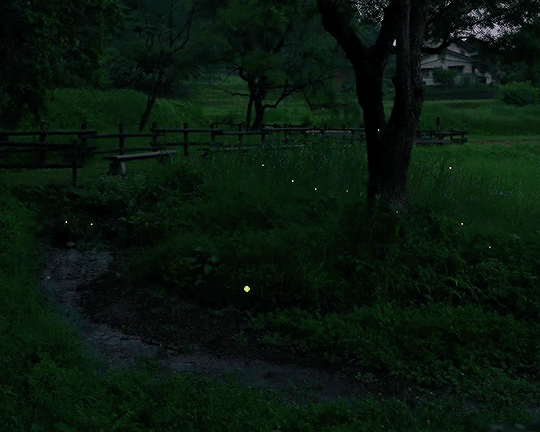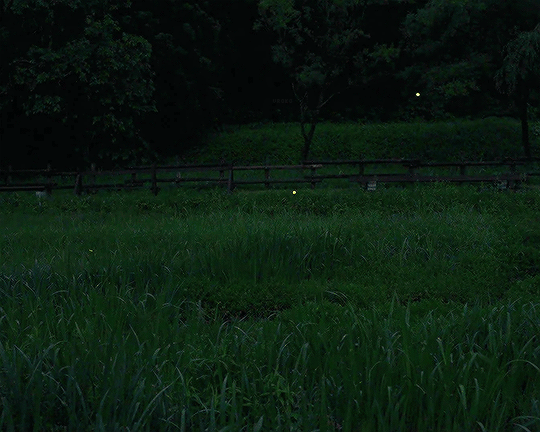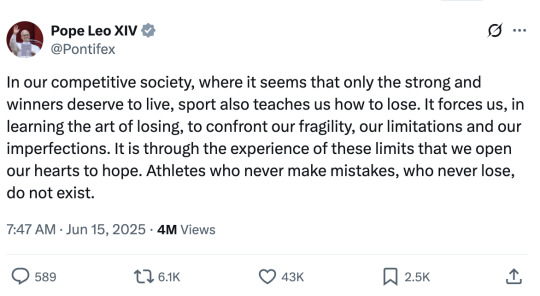white. 29. ey/em or it/its. stridently gay.on bluesky & dreamwidth same handle but i live here
Don't wanna be here? Send us removal request.
Text

Thomas Blackshear II (African American, b.1955)
"Dance of the Wind and the Storm," 1996
Lithograph 24 x 31.5 in
977 notes
·
View notes
Text

from "The Welsh Fairy Book" written by W. Jenkyn Thomas ~ 1925 ~ illustrated by Willy Pogny (Hungarian illustrator, 1882-1955)
132 notes
·
View notes
Text

A green huntsman spider (Micrommata virescens) in Sourbrodt, Belgium
by Frank Vassen
2K notes
·
View notes
Text
Events do not come naked into the world. They come clothed - in attitudes, assumptions, values, memories of the past, anticipations of the future, hopes and fears, and many other emotions. To understand events, it is necessary to describe the perceptions that accompany them, for the two are inseparable.
Robert Darnton, The Revolutionary Temper: Paris, 1748-1789
26 notes
·
View notes
Video
youtube
Historiography
There was rain, there was wind There was spring coming in There was a feeling of approaching doom And I was happy to see you It was cold in your room and you were warm and that’s all I remember And your arms were warm and that’s all I remember
Later on near morning We were talking about nothing A little rain, a little wind Quiet cold, cold air coming in And you were warm and that’s all I remember And your arms were warm and that’s all I remember And your eyes were pretty and that’s all I remember And your hands were soft and that’s all I remember And the hall was well-lit as I walked down it and that’s all I remember And the rain was light and it felt soft on my face and that’s all I remember And the car was quiet inside and that’s all I remember And it was dark but the sunlight was coming and that’s all I remember
from Transmissions to Horace (1993)
73 notes
·
View notes
Text
Nationwide, one in 10 working miners is now estimated to have black lung. In the heart of the central Appalachian coal fields, it’s one in five. Often, their disease is more severe, the progression faster. Doctors are seeing larger masses and more scarring in the lungs. Transplants, disability claims and deaths are all on the rise.
In an old industry, the reasons are modern. Centuries of extraction have altered the landscape, making the mountains more dangerous to mine, researchers say, and the men beneath them vulnerable not just to black lung, but to another lung disease called silicosis.
#black lung#industrial dust disease#sorry for linking [am archived version of] the new york crimes but look it's a piece on black lung#it does a poor job explaining PMF & silicosis. also it seems that the journalist neglected to speak to anyone from UMWA#or any of the several active black lung associations & instead talked to an industry spokesperson so huge L there#but it usefully summarizes the state of the problem & the effect the NIOSH+MSHA cuts may have
12 notes
·
View notes
Text


Bruce Springsteen visiting his childhood home in New Jersey. 1980s | 2025.
4K notes
·
View notes
Text
coleslaw
#i'm freaking out about traveling so obviously. coleslaw#save me dubious cabbage salad. dubious cabbage salad save me
6 notes
·
View notes
Photo




♡
84K notes
·
View notes
Text
i have been feeling less distress lately but i have also been feeling less joy. i really like my life! i am very grateful to be living it, and i love the people in my life, and things are going well for me. but there is a thick veil between me & the feelings my life evokes in me, or it feels that way. i am used to being pressed up against my ribcage by my emotions, or flung around inside my head, or expanding through my skin. maybe that is all nonsense but it is pretty literal to the physical sensations i would have: i would be angry & feel a great wind through my skull, i would be glad & feel as though i glowed, i would despair & my chest would ache unbearably, & so on. it was not always especially convenient but this seemed to me a normal way to move through the world. & now i am much more like: "i am having a pretty nice time!" or "i am distressed about the world! i will work on a task that feels useful to me," or whatever. and i'm not horny anymore also, tmi maybe. and it kind of sucks! like it makes it easier for me to be full-time employed i guess? and i want to kill myself less often, so that's nice. but i also feel like something definitive about me is slipping away, and i don't like it; and i'm also sort of worried that this is going to become normal for me and i will, as one does, forget the feeling of that earlier state of consciousness, & as i forget i will lose the sense of connection to people who are having a really hard time. that sounds bad. having a bad time in my brain isn't a job skill or whatever but it is really important i think to remember insistently & eternally that you are not different from the person loudly talking to themselves in the public library, & to feel love for this person as a fellow-traveler despite the social pressure to treat them otherwise, not in a [usually christian] charity way but from a sincere sense of solidarity. and the pressure to do otherwise is intense & unrelenting. and i am worried that the thing where i don't just burst into tears about my ethical convictions & also random fictional characters means that i will be less. okay you know what this post might be a little stupid please look on me fondly anyway
#also i accidentally a little bit glued my thumb to my shoe earlier so it is going really well as you can all see#good night & good luck#irredeemable whining
10 notes
·
View notes
Text






NOSFERATU (2024) Screenplay by Robert Eggers
999 notes
·
View notes
Text
Unicorn by Rainer Maria Rilke, translated by Don Paterson
This is the animal that never was. Not knowing that, they loved it anyway; its bearing, its stride, its high, clear whinny, right down to the still light of its gaze.
It never was. And yet such was their love the beast arose, where they had cleared the space; and in the stable of its nothingness it shook its white mane out and stamped its hoof.
And so they fed it, not with hay or corn but with the chance that it might come to pass. All this gave the creature such a power
its brow put out a horn; one single horn. It grew inside a young girl’s looking glass, then one day walked out and passed into her.
197 notes
·
View notes
Text
did you know a new york public library card includes remote access to my other other favorite database OXFORD BIBLIOGRAPHIES?? because i just found out today & i'm very excited about it
#blah blah newspapers blah blah morningstar blah blah jstor WHO CARES I HAVE BIBLIOGRAPHIES#so when i. as i do. go 'wow wish i knew more about that' i can just look at an annotated list of what to read prepared by an expert#it rocks. it fucking rocks#i've been sleepy and flaky lately but standing offer i would be sincerely delighted to pull library resources for you#i have some academic library access and i will send you a pdf or whatever we don't have to be friends#i have a lot of favorite databases. gale legal forms fixes a lot of problems for public librarians & maybe also for you#i keep the other top slot for whatever i am enjoying at the moment. university of california press' open access books interface is good
10 notes
·
View notes
Text

wake up babe the holy father is posting white sox fan cope on x, the everything app
#here's to rooting against the rays#baseball is a transcendent human experience in the dumbest possible way#nothing holier than watching your team suck incomprehensibly bad
5K notes
·
View notes
Photo

After a Rain, 1879, Arkhip Kuindzhi
1K notes
·
View notes
Text
Despite what some adults seem to think, teenagers are fully human. And some of them read as intensely and keenly as if their life depended on it. Sometimes maybe it does.
Ursula K. Le Guin, A Wizard of Earthsea's postface
2K notes
·
View notes
